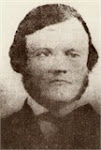The photo shows one of the large burial mounds of the Outlet mound group on the former Hoyt property at the foot of Lake Monona. The photo was taken in 1913 by Charles Brown and is owned by the Wisconsin Historical Society.
There once were some 20,000 Indian mounds in Wisconsin, which is home to the a nearly unique world class collection of effigy mounds. In the 4 Lakes region alone there some 1500 mounds built in groups or clusters mostly near the shores of the Four Lakes. Despite the vigorous efforts of Charles E. Brown in the early 1900's, about 80% of these mounds were destroyed. Nonetheless, the several hundred remaining mounds make this area the richest in the world for Indian mounds.
Brown, the first state archaeologist, devoted his career to the preservation of Indian mounds. He figures prominently in an early, and in my opinion decidedly unhappy episode in the history of Monona. In the late 1920's Brown and local area activists formed the Lake Monona Wild Life Sanctuary Association to purchase a preserve the 22-acre wooded tract known as Frost Woods. The Ho-Chunk chief Oliver Lamere opened his summer home in the area to the group for 'Feast and Pow-wows'. The group proposed alternate-use plans for the property, including a multi-purpose cultural and nature center, a wild life sanctuary, an outdoor museum, a wild life school, a perpetual campground for the Ho-Chunk and a recreational area for youth organizations. Despite raising funds for three years, the group fell short by $12,000, the land was sold for development, and the woods and many mounds destroyed. On February 26, 1931, Brown was quoted in Wisconsin State Journal thusly:
In 25 or 50 years Madison will, I am sure, regret this lost opportunity to rescue almost the last of our native Woodlands around the lakeshore.

















In addition to the Outlet mound, there is mound largely preserved on the Ron Paul property in Frost Woods. The mound is a rare effigy of a panther figure, although the tail has been cut off by Panther trail. This mound has been privatly preserved - my understanding is that there was an effort to cede this lot to the city during the '30's but that no satisfactory agreement could be reached. Ron is an excellent resource for a history of the area and the location of the mounds in the neighborhood (he also has a related ghost story or two!) Anyway Ron does not have the resources to preserve the mound - it is in a wooded area which has inadequate ground cover to prevent erosion, and is likely to be lost.
ReplyDeleteInteresting stuff. I'd heard there was a mound somewhere in that vicinity. I also ran across a stroy that said the Ho Chunk had placed a 'curse' in relation to destruction of some of the Outlet mounds, but now I can't find it.
ReplyDeleteI found the source. In an article entitled 'The Monona Mound', Charles Brown wrote that the Ho Chunk "who formerly resided on the site have a legend that great harm will come to any person to any person who attempts to destroy or injure this fine monument." This is in a footnote in the Birmingham article on Brown. He also mentions another mound is located in the backyard of a nearby house; maybe that belongs to Mr. Paul.
ReplyDelete